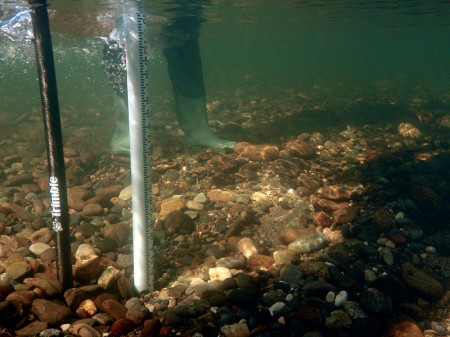Friday December 2, 2011
For the past few weeks, fisheries technicians have been carefully surveying miles of the Stanislaus River for salmon nests (i.e., redds). Perched high on the bow of a boat, this technician wears polarized glasses to see through the glare on the water surface to look for signs of salmon spawning activity. Female Chinook salmon clean and move gravel around with their tail to form teardrop-shaped “bowls” where they deposit their eggs. On average, a redd is about three feet wide, four feet long and four to five inches deep. During the survey, technicians count and measure the redds, map their location using GPS and record water depth and velocity. Crews will continue to survey the river bi-weekly through the end of December, as spawning diminishes and thousands of salmon carcasses are left to nourish the river and riparian habitat. Redd surveys provide valuable data, for example, the information allows water operators to adjust flows to generate favorable conditions for successful spawning and egg incubation.


